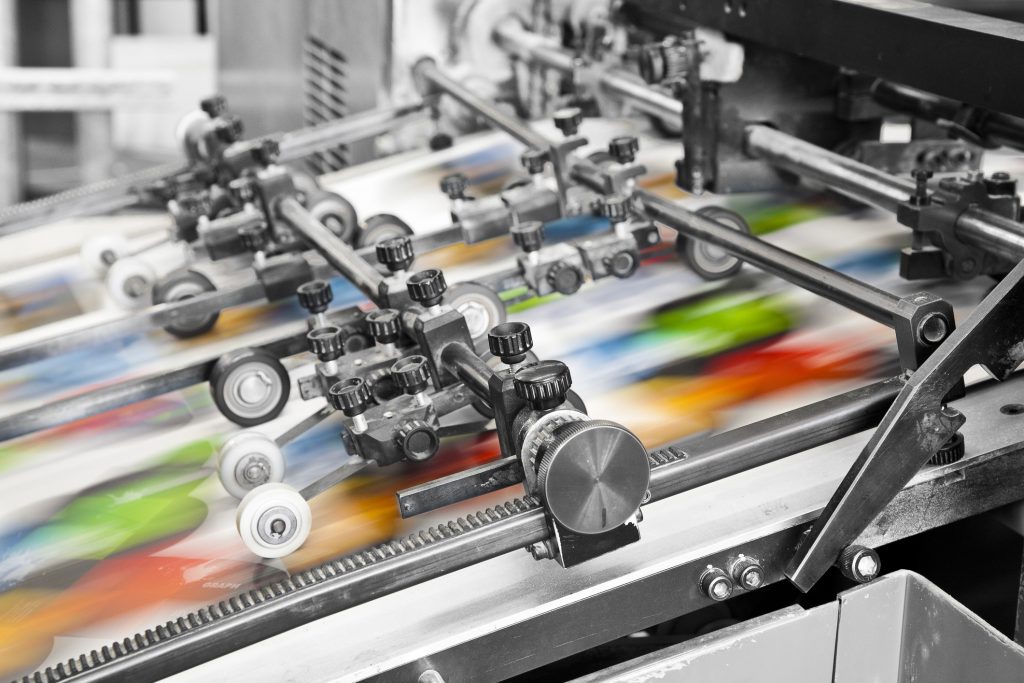In the dynamic world of printing, flexographic printing stands out for its versatility and efficiency. However, like any technology, it comes with its own set of challenges. If you’ve found yourself asking how to handle unexpected issues in flexographic printing, you’re not alone. This article dives deep into the core aspects of troubleshooting flexographic printing, guiding printing professionals and enthusiasts alike through common obstacles and solutions.

Understanding Flexographic Printing
Before we delve into troubleshooting flexographic printing, it’s essential to grasp what flexographic printing entails. It uses a flexible relief plate, ideal for high-quality printing on various substrates, including plastic, metallic films, and paper. It’s widely used in industries like packaging and labels, offering benefits of speed and cost-efficiency.
Key Components of Flexographic Printing
Flexographic printing is built on several key components, including the anilox roll, printing plate, and inks. Understanding these components is crucial for effective troubleshooting. Each component has a specific role that impacts the overall printing process quality.
Common Problems in Flexographic Printing
Despite its advantages, flexographic printing is susceptible to several issues. These include poor ink transfer, plate wear, ghosting, and more. Addressing these problems can significantly enhance print quality.
Problem: Poor Ink Transfer
Poor ink transfer is a frequent issue in flexographic printing. It usually results in uneven print quality, affecting the final output. Causes can range from improper anilox roll settings to unsuitable ink viscosity.
Solution: Adjusting Anilox Roll Settings
To address ink transfer issues, start by checking and adjusting the anilox roll. Ensure its clean and has the appropriate cell count for your printing requirements. Maintaining the right ink viscosity is equally critical.
Problem: Plate Wear and Damage
Plate wear is another common concern. It often leads to blurred prints and reduced quality, usually caused by excessive pressure or chemical degradation.
Solution: Proper Pressure and Handling
Regularly inspect and maintain your printing plates. Minimize excessive pressure during the print run and assure proper storage to prevent chemical degradation. Periodic replacement of worn plates is recommended.
Problem: Ghosting
Ghosting manifests as unwanted images or patterns appearing in print jobs. It can result from faulty ink distribution or misaligned press components.
Solution: Diagnose and Align
To resolve ghosting, ensure that the ink fountain is properly aligned and check for any mechanical misalignments in the press. Regular maintenance and alignment checks are crucial.
Preventive Measures in Flexographic Printing
Prevention is often the best cure in flexographic printing. Effective troubleshooting involves understanding not just the cure but also how to prevent issues from arising in the first place.
Routine Maintenance
Implement regular maintenance practices for your flexographic printer, including cleaning of vital components such as the anilox roll and printing plates. Regular checks help in identifying potential issues before they affect the print quality.
Employee Training
Ensuring that staff are well-trained in handling equipment and troubleshooting common problems can significantly reduce downtime and improve efficiency. Continuous training programs are advised.
Use of Quality Materials
Using high-quality materials such as inks and plates can minimize many of the common issues associated with flexographic printing. Invest in quality to secure reliable print outcomes.
Advanced Troubleshooting Techniques
For complex problems requiring more than basic interventions, advanced troubleshooting techniques are necessary. These might involve professional diagnostic tools or consulting with technical experts.
Consulting Experts
When facing persistent issues that impact production quality or efficiency, consulting with experts can provide invaluable insights and solutions.
For more technical guidance on this, you can reference [Wikipedia](https://en.wikipedia.org/wiki/Flexography ‘Flexography’ rel=’nofollow’ style=’color:blue;’).
Use Diagnostic Tools
Diagnostic tools help detect and correct issues with precision. Investing in cutting-edge tools can significantly reduce repair times and ensure consistent print quality.
Don’t forget to explore [how flexographic printing works](https://newprintingera.com/how-flexographic-printing-works/ ‘flexographic printing’ rel=’dofollow’ style=’color:blue;’) for a deeper understanding of equipment operations.
Optimizing Flexographic Printing Outcomes
Optimizing the outcomes of flexographic printing involves continuous improvement of practices and embracing new technologies. Stay updated with industry trends to maintain a competitive edge.
Upgrading Equipment
Consider equipment upgrades when existing machinery is outdated or unable to meet current demands. Up-to-date machines not only produce better quality prints but also operate with greater efficiency.
Conclusion
In conclusion, effectively troubleshooting flexographic printing demands a mix of understanding foundational principles, proactive maintenance, and employing modern tools and techniques. As the industry evolves, so should the practices and technologies used by printing professionals.
For continuous improvement, review your processes regularly and make adjustments as needed. For further insights, refer to [plate making in flexography](https://newprintingera.com/plate-making-in-flexography/ ‘flexography’ rel=’dofollow’ style=’color:blue;’).
Ensuring that flexographic printing processes are efficient and delivering high-quality results can be the difference in your business’s success.

FAQ Section
What are common flexographic printing problems?
Common problems include poor ink transfer, plate wear, and ghosting. Addressing these typically involves adjusting the anilox roll, maintaining printing plates, and ensuring proper ink viscosity.
How often should flexographic equipment be maintained?
Regular maintenance is key. It is recommended to conduct weekly checks and comprehensive monthly maintenance to prevent issues.
What materials work best with flexographic printing?
High-quality inks, proper anilox rolls, and durable printing plates are ideal for obtaining the best results in flexographic printing.






